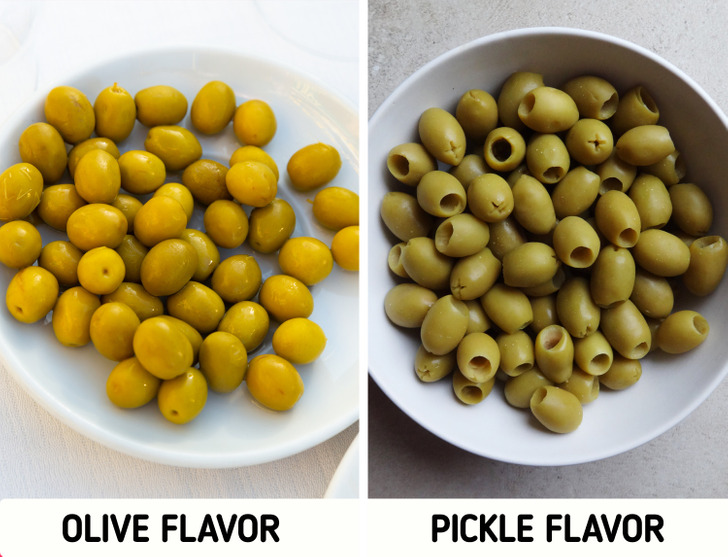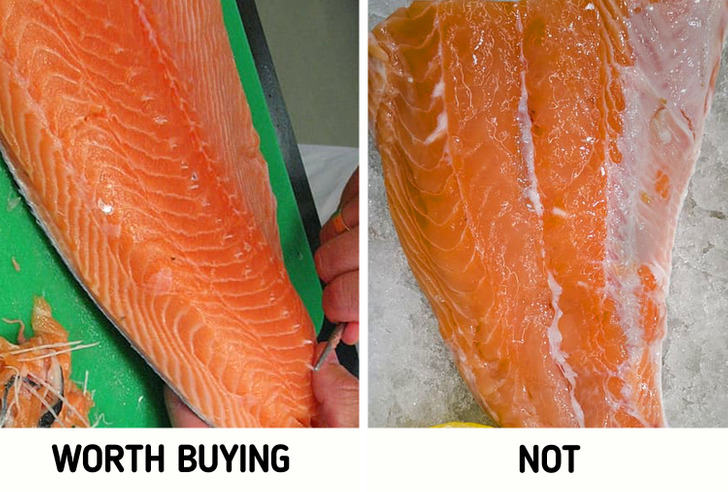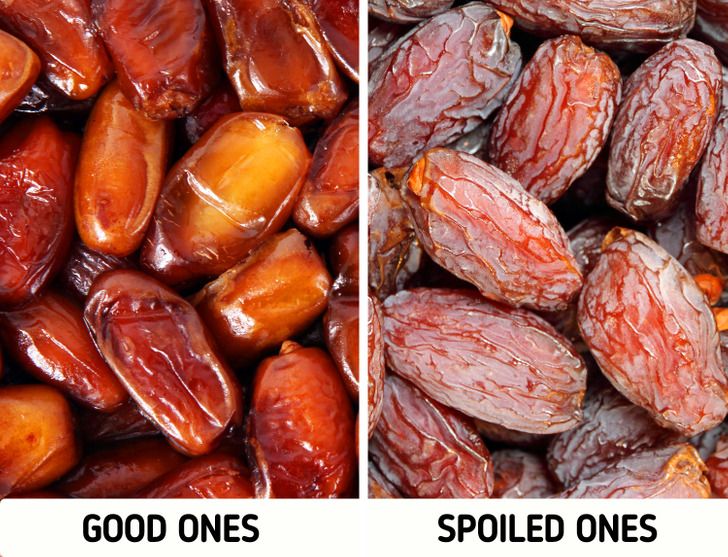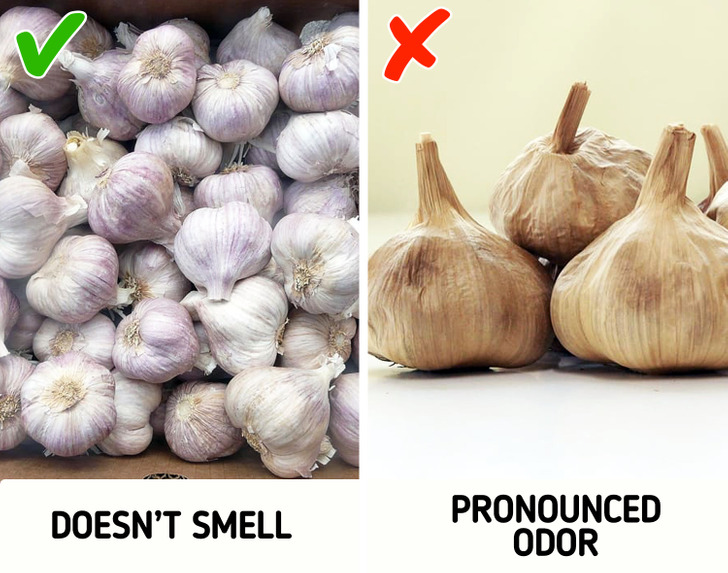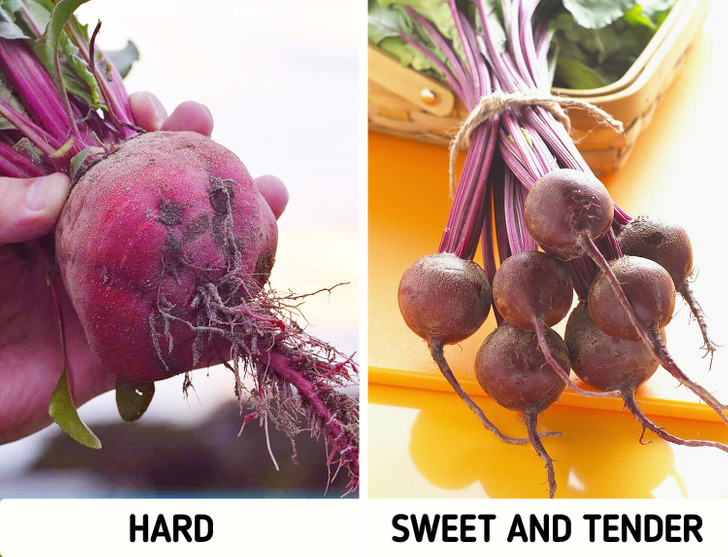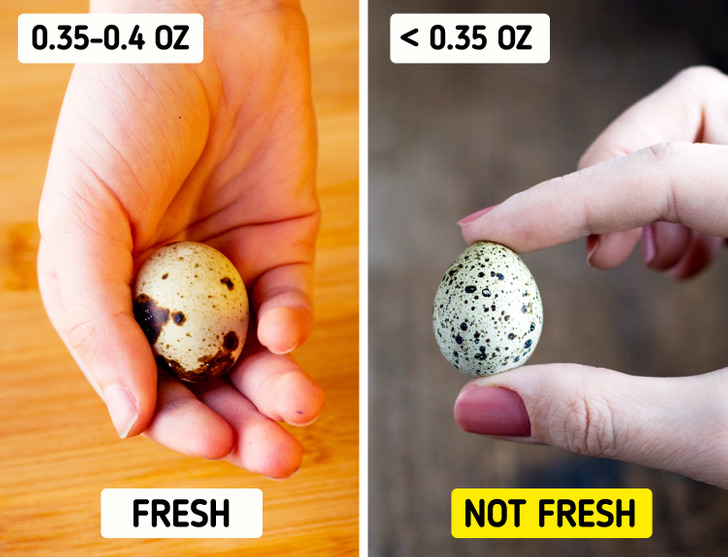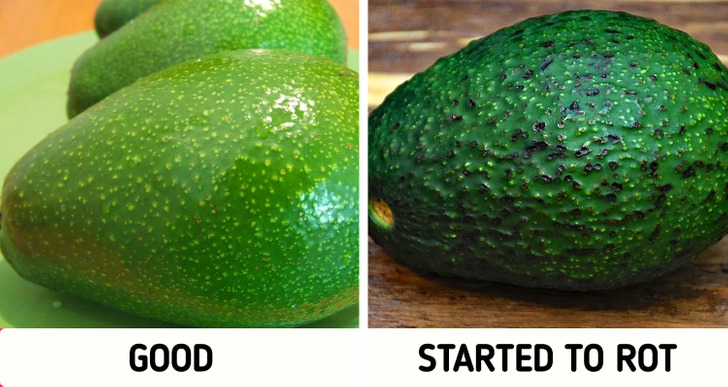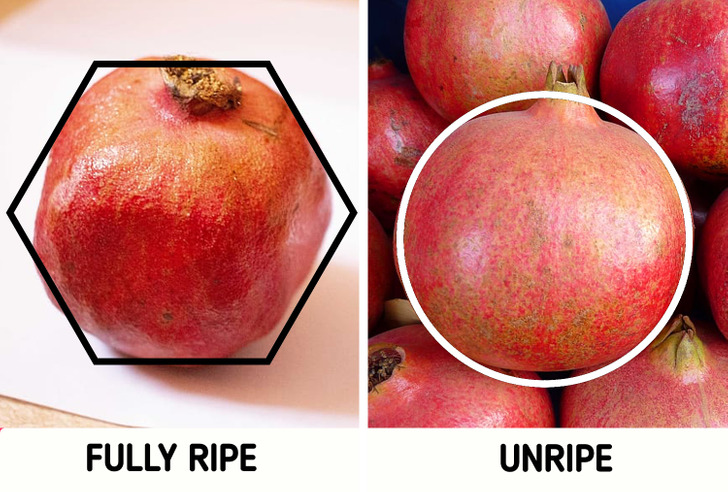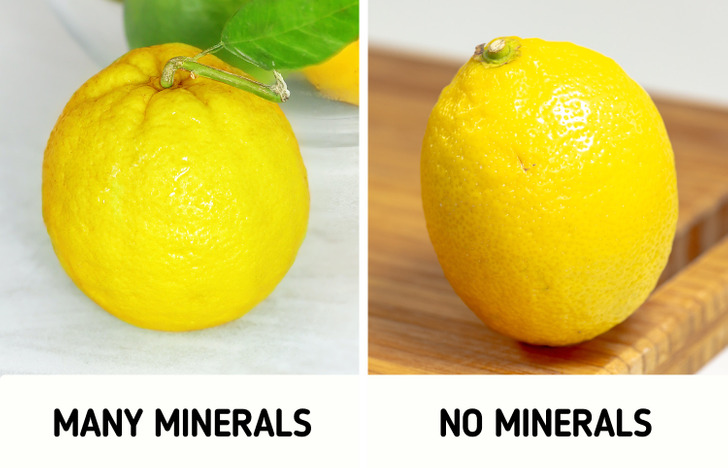😍👍👌🏻👌🏻
9 Ways to Choose Fresh and Healthy Products at the Store
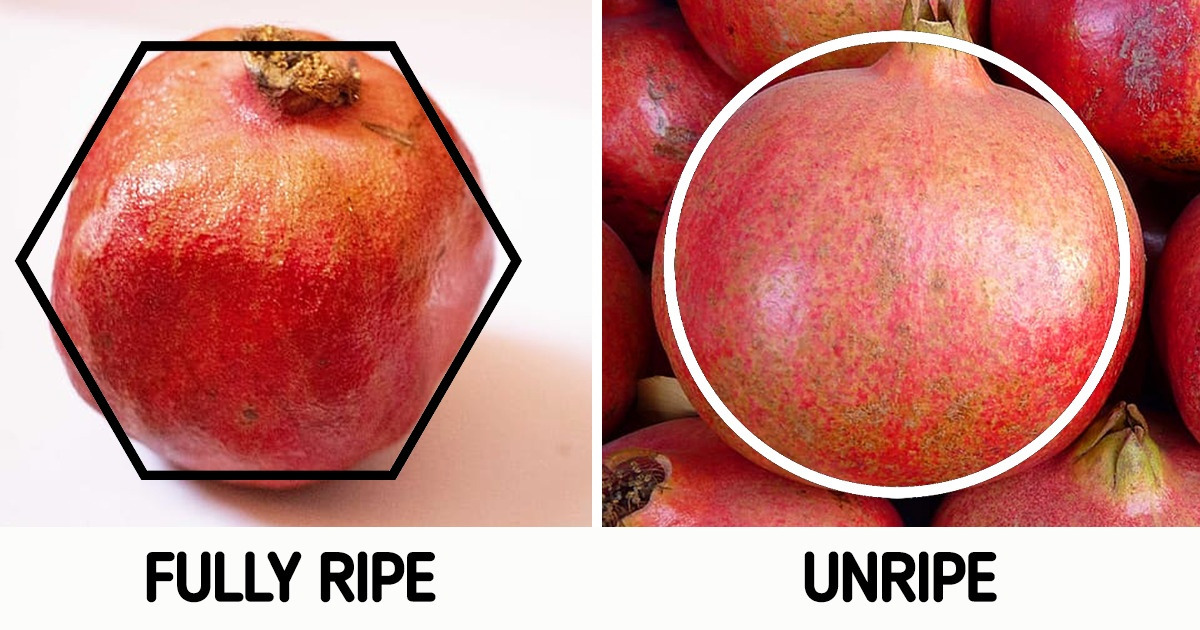
In the modern world, stores are waiting for us around every corner, and the variety of products they offer us is huge. But sometimes this only makes the situation more difficult. We might run across a product with an overdue expiration date or end up buying unripe or tasteless fruits and vegetables. The good thing is that you can avoid all these things if you know the right tips.
We at Bright Side value our health and money, and that’s why we learned several tricks that will help you buy fresh and healthy products.
Olives
When choosing olives, it’s better to opt for ones with seeds. This is because after removing the seeds, olives are placed on a pickle that gets inside and can make the fruit look like a mash. Moreover, it overshadows the true taste of the olives when it gets inside.
Salmon
As surprising as it might sound, fresh fish shouldn’t have a well-pronounced fishy smell. If you sense this, it’s likely that the fish isn’t fresh.
Another sign of freshness is color. Salmon fish that are grown on a farm are usually light pink in color, while wild fish normally have darker shades. If there are gray or brown stains on the surface of the fish, it indicates that the fish has been stored for quite a while already.
Dates
Fresh dates can be shriveled, but not too much, nor should they be too tough. Dried fruits are best when they look fleshy and have slightly glossy skin. They shouldn’t have sugar crystals or white spots, as their presence indicates that deterioration has already begun.
Garlic
If a seller declares that the garlic they are selling is fresh, it can be understood by a slight smell. If the smell is too pronounced, it’s likely that the vegetable is old or has been stored incorrectly. Moreover, it could also have started rotting inside.
Beetroot
When buying beetroots, go for ones with greens, as it will help you to easily identify that the vegetable is fresh. But it’s not always possible to find such beets, which is why you need to make sure to pay attention to the size and the root of the vegetable. It’s better to choose a not-too-big beet without too much hair on the tail, otherwise, you risk getting a tough, non-sweet product.
Quail eggs
When choosing quail eggs, first of all, make sure to carefully check and inspect the condition of the shell: it should not be damaged. It’s worth remembering about shelf life: up to 30 days at room temperature and up to 60 in the refrigerator. If the package has no manufacture date, you can identify the freshness of the eggs by their weight. A fresh egg will weigh 0.35 oz-0.4 oz. If an egg is slightly smaller, it means that quail eggs (just like other types of eggs) have already started to dry up, and you’d better opt for different ones.
Avocado
Any pronounced spots that differ from the main color indicate that something is wrong with the fruit. It is best to avoid avocados with dark skin markings, as this is often a sign that the rotting process has started. You can also put pressure on the area next to the stalk — if you can poke it with your finger, the fruit is likely overripe.
Pomegranate
Sometimes purchasing a pomegranate turns into a disappointment because it turns out to be pale and not sweet inside. In order to avoid such a situation, pay attention to the following: the shape of the fruit shouldn’t make an ideal circle, but rather, it should be angular, as smoothness and firmness of the skin are also indicators of ripeness.
Lemons
First of all, a good lemon can be identified by its weight and the thickness of its skin. The fruit might not seem big at first glance, but it should be heavy. Thin skin and a dimple where the stem used to be with mini lines radiating out of it are a sign of a top-notch lemon. They show that there is a high content of minerals in the fruit.
Are you aware of any tricks that help you choose the tastiest and freshest products in a store?
Comments
yasss baby
Related Reads
15 Stories That Show Kindness Can Change a Life in a Single Moment

15+ Raw Stories About Jealousy That Can Leave You Speechless

I Refused to Return My Coworker’s Old Office—Now the Whole Team Has Turned on Me

11 Stories That Remind Us Kindness Takes a Minute, but Means the World

My Mom Ignored Me for Years, Then Suddenly Begged Me for Help

I Refused to Pay for My Stepson’s College—He’s Not My Responsibility

My MIL Wanted Me to Be Her Free Maid — She Didn’t Expect My Next Move

16 Men Who Proved True Love Isn’t About Big Words, but About Quiet Actions That Melt the Heart

12 Acts of Kindness That Made Someone See the Horrible Truth
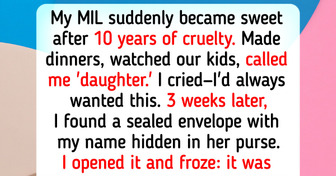
I Excluded My Stepson From Our Trip — My Husband Made Me Regret It

I Won’t Forgive My Parents Who Made Me Feel Worthless

I Refuse to Be Treated Like the Family Nanny—And My Mom Chose Her Boyfriend Over Me

